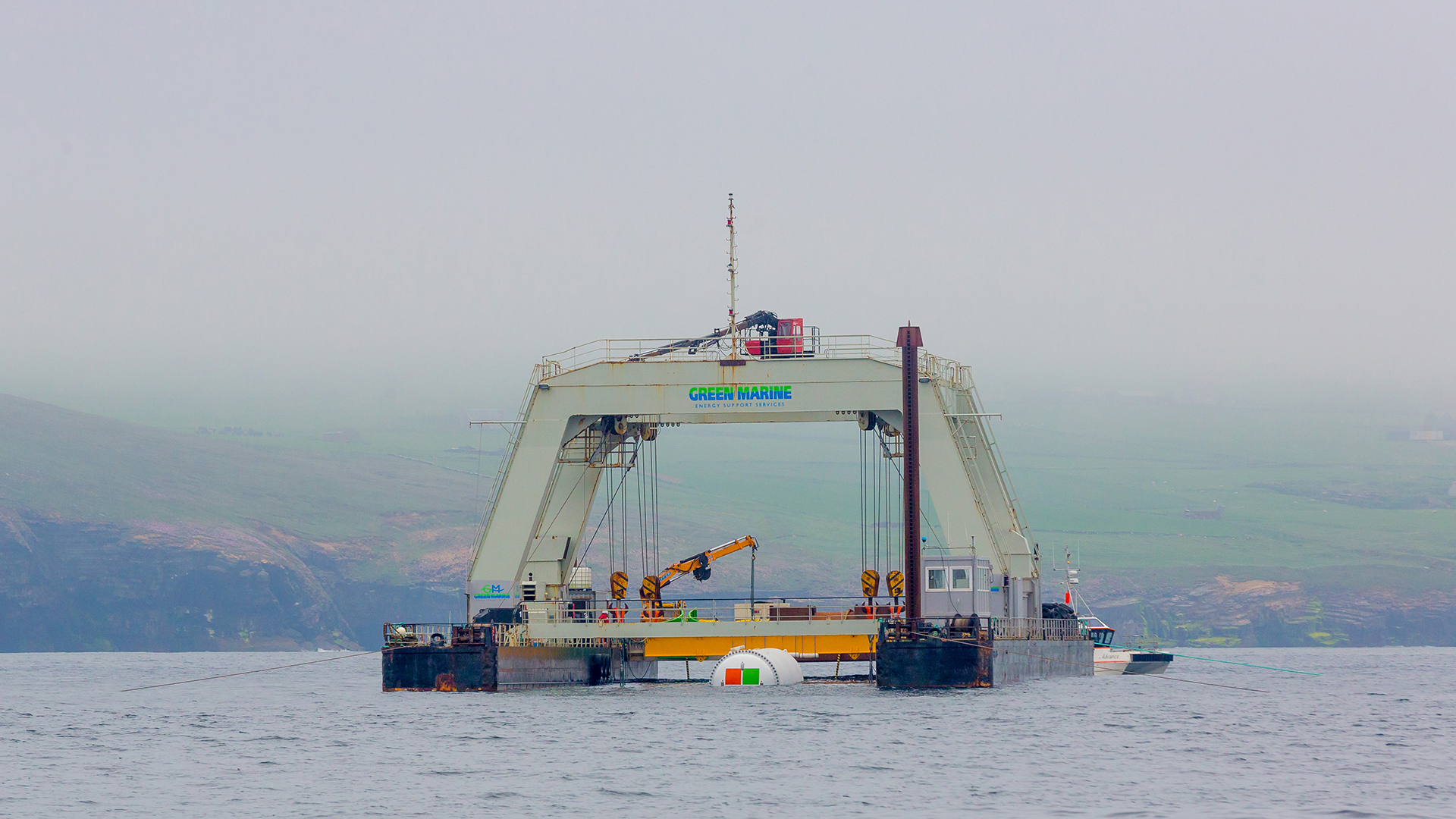Microsoft are looking at putting datacenters under the ocean, which sounds like a really good idea to cool them but I can’t help but think a couple decades from now it’s going to start causing us problems
Well it’s certainly better environmentally than using conventional air conditioning, doubt it would heat up the oceans significantly
Would it heat up the oceans: yes.
Significantly:no.
If this pans out it would be a lot better than what we are doing now.
It will always be less heating than if you use aircon.
It would take quite a bit of energy to effect things on a global scale but it could cause some issues at a very local level.
As is usual with renewable energy sources
Would you kindly swap out the memory on that server?
The container is regarded as a single unit; if a server inside the container fails the functions of that server are offloaded to another available server and it is taken out of service.
Once enough servers in a container are offline the entire unit has all computational load offloaded to another, identical container with sufficient capacity.
Then the now-offline unit is retrieved and serviced; probably a ground-up rebuild of all components.
… but I do like the idea of some dude in a wetsuit trying to replace a memory stick.
No one does maintenance on the server farms. It costs more money to send someone in than to let the parts slowly die until the farm no longer is economically viable. Once that happens, you sell the whole farm to a recycler.
Microsoft’s next invention will be a Memory Swap plasmid lol
I understood that reference…
finally…thank you.
Not really. It’s not like there’s a nuke reactor in there.
There isn’t a nuke reactor in there, is there?
Now you’re talkin!
At the deployment site, a remotely operated vehicle retrieved a cable containing the fiber optic and power wiring from the seafloor and brought it to the surface where it was checked and attached to the datacenter, and the datacenter powered on.
Sadly, it sounds like power is coming from the shore.
Underwater datacenters could also serve as anchor tenants for marine renewable energy such as offshore wind farms or banks of tidal turbines, allowing the two industries to evolve in lockstep.
But I think this is their plan for energy in the future.
Onshore, wind turbines sprout from farmers’ rolling fields and solar panels adorn roofs of centuries-old homes, generating more than enough electricity to supply the islands’ 10,000 residents with 100 percent renewable energy. A cable from the Orkney Island grid sends electricity to the datacenter, which requires just under a quarter of a megawatt of power when operating at full capacity.
It’s still pretty darn clean.
The thought of these plus tidal generators makes my day.
Yeah, the Orkney Islands are also experimenting with tidal generators (Wikipedia/European Marine Energy Centre), though the weather there is ideal for wind energy.
I can’t wait to reserve some compute time for when the ocean data center is getting wind power.
Considering all the volcanoes and heat vents down there, I doubt a data center is going to tip any scales.
Realistically probably not and as people have pointed out it’s better than them doing it into the air less efficiently but my point was not about a single data center it was more if it caught on and we started dumping thousands of these things in the ocean
deleted by creator
Why would this be a bad thing? Doubt it happens at any scale but this seems like a perfectly viable way to cool data centers compared to how energy intensive they are today.
im way more worried about undersea mining than i am data centers being underwater.
I like the idea of using renewable energy (tidal, wind) right where it’s produced.
It’s apparently the demonstration phase and for now rely on an power coming from elsewhere. Once it’s deploy I hope they keep their promise to rely on local energy production.
I wonder if they’d allow it to be a bit of an artificial reef… I’d like that concept.
I doubt they’d be able to stop it from becoming one, especially if they don’t want to spend the server downtime to haul it out for repainting.
The system pipes seawater directly through the radiators on the back of each of the 12 server racks and back out into the ocean.
How much is it going to heat the local area? Along with disk and rack design testing, are they also testing how this thing affects wildlife?
The appeal is understandable: proximity to population centers, temperature, security, scaling with renewable tech, etc.
I wonder if international waters is their end goal. Self-reliant, off-grid data centers that only abide by MS rules.
Everything has to be cooled, it’s a question of efficiency. Directly exchanging the heat into cold water is arguably better than expending fossil fuels to generate electricity to pump the heat out of your servers and into the atmosphere. You get multiple losses with current technology: fossil fuel efficiency losses, electric line losses, air conditioning efficiency losses. And the additional electrical generation dumps more CO2.
Oh no doubt. It makes a great deal of sense.
I’m just curious what the actual heat output is (avg, min, max, in vs out), and what the environmental impact is.
Will there be biofouling because the warm seawater is desirable?
Will it even be viable offshore from places like Miami?
Can it produce too much heat for the local environment? Probably not one, but what about after this scale-up with renewables like the article mentions?
At what scale would it begin to disrupt things like the AMOC?
deleted by creator
So how do they deal with the salty ocean water corroding everything? I mean for cooling, they have to exchange heat with it somehow. Looking at pictures of wrecks, any kind of heat exchanger would likely rust or become covered in various lifeforms rather quickly.
I would imagine they can get away with using much heavier, stronger and thicker materials as these things have zero requirement for buoyancy or portability (besides getting them there in the first place)
Not sure how they’d prevent it from being covered in algae and they even mentioned that they noticed sealife was using it as a home
I reckon it’d be a combination of using the hull itsself as a giant heat sync and the fact they can get some pretty ridiculous cooling from the ocean to compensate for some inefficiency with heat transfer
Just my guess though
Please post the article-date in your title!
I linked the original article, the date’s there for all to see if they want it
I don’t know why but hearing “moonshot” makes me cringe.
Some warship is going to detect this on their radar, confuse it with a sub and maybe cause an international incident.
warships don’t just torpedo every submarine they detect…












